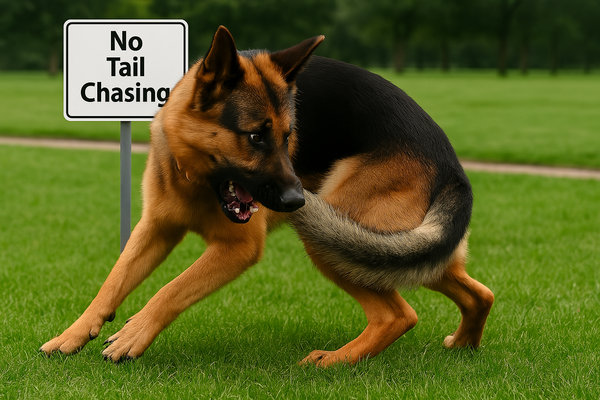
Why Do Dogs Chase Their Own Tail?
It’s a sight that never gets old—your dog spinning in circles, trying to catch that elusive tail. It’s funny, adorable, and often leaves us wondering: Why do dogs chase their own tails? While it may seem like harmless fun, tail-chasing can actually have a variety of reasons behind it, from boredom to medical issues. Here’s what every dog parent should know.
Common Reasons Dogs Chase Their Tails
1. Playfulness and Curiosity
Young puppies often chase their tails simply because they’re discovering their bodies. It’s all in good fun and totally normal during those early months.
2. Boredom or Lack of Stimulation
When dogs don’t get enough mental or physical exercise, they may invent their own entertainment—including tail-chasing. Regular walks, toys, and training sessions can help reduce this behavior.
3. Attention-Seeking Behavior
If you laugh or react every time your dog chases their tail, they may learn that this gets your attention—and repeat it just for the response.
4. Stress or Anxiety
Some dogs chase their tails when they’re anxious or stressed. It becomes a repetitive behavior that soothes them, similar to nail-biting in humans. In these cases, the behavior may become obsessive.
5. Medical Causes
Tail-chasing can also be linked to physical discomfort such as:
-
Fleas or allergies causing itching
-
Injuries or infections near the tail area
-
Anal gland issues
If the behavior is excessive or accompanied by biting, licking, or hair loss, consult your vet to rule out medical concerns.
6. Breed Tendencies
Certain breeds—like Bull Terriers and German Shepherds—are more prone to compulsive tail-chasing. In these cases, professional training or behavior therapy may be helpful.
When to Be Concerned
Occasional tail-chasing is usually harmless, especially in young dogs. But if it becomes frequent, obsessive, or your dog appears distressed, it’s time to look deeper.
How to Reduce Tail-Chasing Behavior
-
Increase play and exercise to reduce boredom
-
Offer puzzle toys and training games to stimulate their mind
-
Avoid reinforcing the behavior with too much attention
-
Try calming support—a natural calming supplement can help manage stress and anxiety.
Conclusion
Dogs chase their tails for all kinds of reasons—from simple play to signs of stress. Understanding the cause can help you decide whether it's just funny behavior or something that needs attention.

